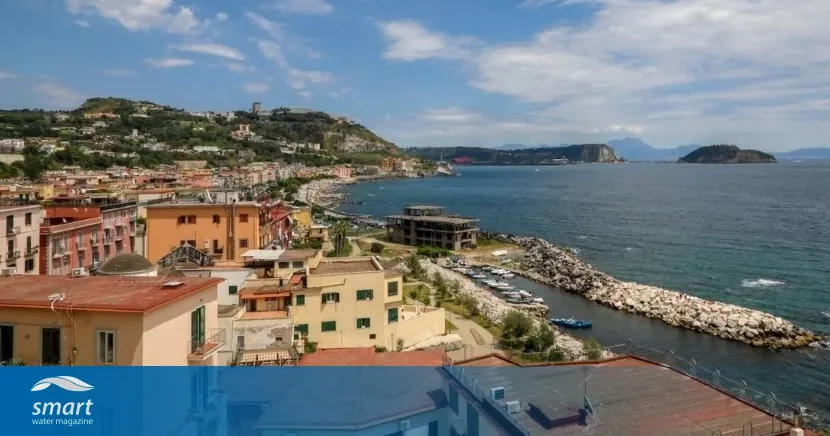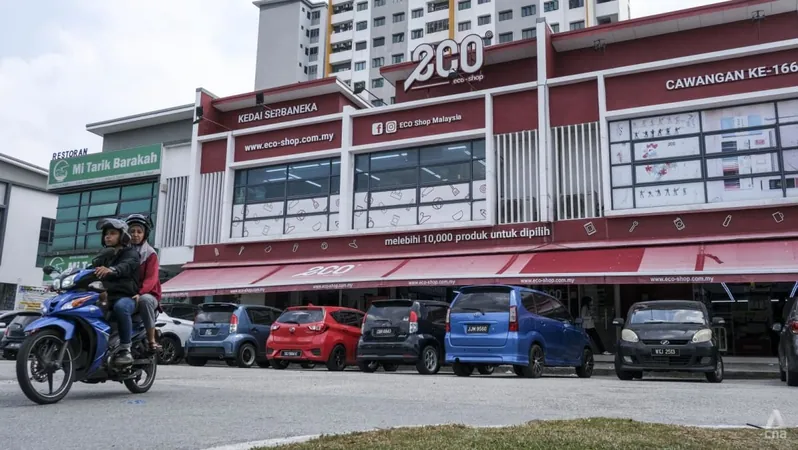
Unlocking the Secrets of Campi Flegrei: How Scientists Aim to Prevent Earthquakes in Italy's Volcanic Hotspot
2025-05-05
Author: Siti
A Volcanic Time Bomb: Understanding the Risks
Southern Italy is vibrating with tension as swarms of earthquakes continue to rock the Campi Flegrei caldera since 2022. This geological hotspot sits above a geothermal reservoir, threatening the safety of hundreds of thousands of residents living in its shadow. While evacuation plans are on the table, a groundbreaking study offers a potential way to avoid the impending disasters altogether.
Revolutionary Research: How Fluid Management Could Change Everything
Stanford scientists have uncovered that the earthquakes experienced here stem from pressure fluctuations in the geothermal reservoir. Their findings, published in Science Advances, reveal that water and vapor buildup can lead to seismic activities when the caprock — a protective lid — seals off. This new insight into the region's seismicity is a game changer, shifting perceptions away from magma movement as the primary cause.
Visual Evidence: The Growing Threat
Dramatic photos from 2016 to 2024 showcase a troubling transformation: a natural spring has evolved into a waterlogged basin following recent seismic events, providing clear evidence of escalating hydrodynamic activity beneath the surface. As conditions worsen, wooden fencing has become submerged, hinting at nature's increasing volatility.
A Call to Action: Mitigating Risks Through Innovation
Senior study author Tiziana Vanorio outlined possible solutions, such as managing surface water runoff or even extracting fluids to minimize pressure builds. These proactive measures could substantially lower earthquake risks, offering new hope for the communities at risk.
Challenging Conventional Wisdom: Revisiting Uplift and Subsidence
The technique of subsurface imaging combined with rock physics has revealed striking similarities between past seismic patterns. The team found that the forces driving seismic events may not solely depend on underground magma dynamics but rather on water pressure in a sealed underground reservoir. With decades of data backing this theory, the researchers are confident that understanding the interaction between groundwater and geothermal activity is key.
The Caldera That 'Breathes': A Geologist's Perspective
Spanning an impressive 8 miles, the Campi Flegrei caldera is a relic of major eruptions that occurred thousands of years ago. Residents describe the landscape as 'breathing,' an apt metaphor for the constant fluctuations in land height and the release of gas and vapor, creating unique seismic conditions.
A Closed System: The Inner Workings of Campi Flegrei
The study emphasizes Campi Flegrei's complex geological structure, particularly the fibrous caprock that sits atop the geothermal reservoir. This closed system allows for substantial fluid pressure accumulation, ultimately leading to explosive bursts as built-up water instantly vaporizes during seismic activity.
A New Model for Understanding Earthquake Drivers
By analyzing the depth and patterns of earthquakes over time, the researchers have challenged the prevailing notion that magma is the primary force at play. Instead, they propose a model illustrating that pressure from subterranean water is crucial to understanding seismic events in this tumultuous region.
Towards a Safer Future: Proactive Measures to Protect Communities
Armed with insights from their research, the team hopes to communicate their findings effectively to local authorities, emphasizing the need for preventive measures. As Vanorio vividly states, 'By managing the fuel of this geological storm, we can shift towards a more proactive approach in Earth sciences.' This could transform how we prepare for and manage geological events, providing communities with tools to avert disaster.


 Brasil (PT)
Brasil (PT)
 Canada (EN)
Canada (EN)
 Chile (ES)
Chile (ES)
 Česko (CS)
Česko (CS)
 대한민국 (KO)
대한민국 (KO)
 España (ES)
España (ES)
 France (FR)
France (FR)
 Hong Kong (EN)
Hong Kong (EN)
 Italia (IT)
Italia (IT)
 日本 (JA)
日本 (JA)
 Magyarország (HU)
Magyarország (HU)
 Norge (NO)
Norge (NO)
 Polska (PL)
Polska (PL)
 Schweiz (DE)
Schweiz (DE)
 Singapore (EN)
Singapore (EN)
 Sverige (SV)
Sverige (SV)
 Suomi (FI)
Suomi (FI)
 Türkiye (TR)
Türkiye (TR)
 الإمارات العربية المتحدة (AR)
الإمارات العربية المتحدة (AR)